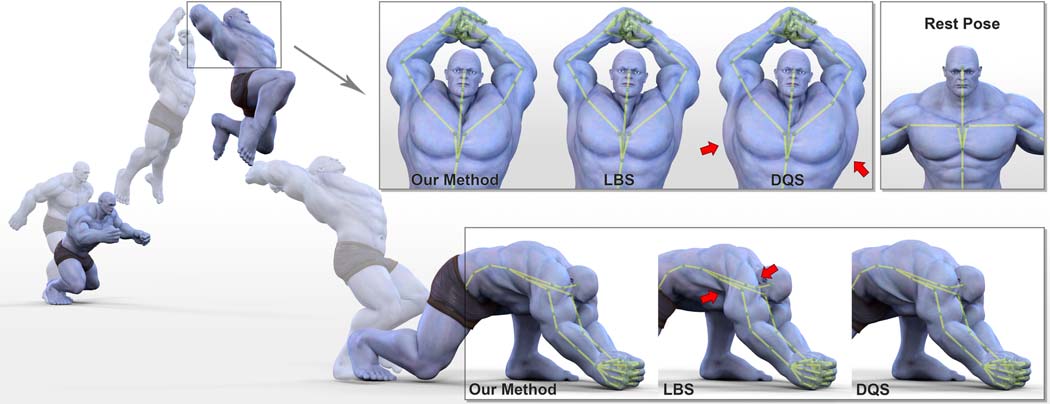Real-time skeletal skinning with optimized centers of rotation
| Binh Huy Le | Jessica Hodgins |
ACM Transactions on Graphics (July 2016)

Skinning algorithms that work across a broad range of character designs and poses are crucial to creating compelling animations. Currently, linear blend skinning (LBS) and dual quaternion skinning (DQS) are the most widely used, especially for real-time applications. Both techniques are efficient to compute and are effective for many purposes. However, they also have many well-known artifacts, such as collapsing elbows, candy wrapper twists, and bulging around the joints. Due to the popularity of LBS and DQS, it would be of great benefit to reduce these artifacts without changing the animation pipeline or increasing the computational cost significantly. In this paper, we introduce a new direct skinning method that addresses this problem. Our key idea is to pre-compute the optimized center of rotation for each vertex from the rest pose and skinning weights. At runtime, these centers of rotation are used to interpolate the rigid transformation for each vertex. Compared to other direct skinning methods, our method significantly reduces the artifacts of LBS and DQS while maintaining real-time performance and backwards compatibility with the animation pipeline.
Binh Huy Le, Jessica Hodgins (July 2016). Real-time skeletal skinning with optimized centers of rotation. ACM Transactions on Graphics, 35(4).
@article{Hodgins:2017:DOE,
author={Binh Huy Le, Jessica Hodgins},
title={Real-time skeletal skinning with optimized centers of rotation},
journal={ACM Transactions on Graphics},
volume={35},
number={4},
year={July 2016},

